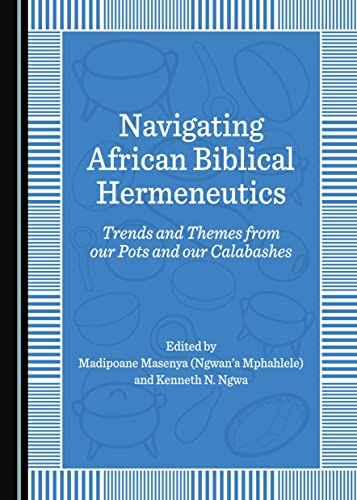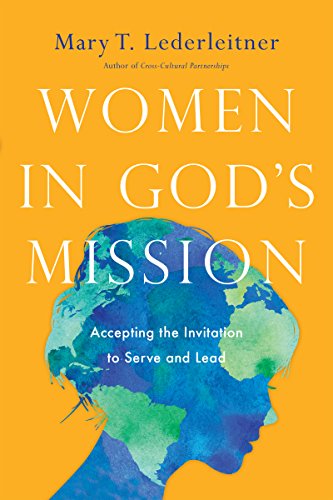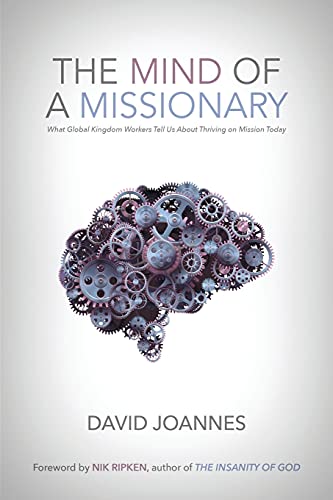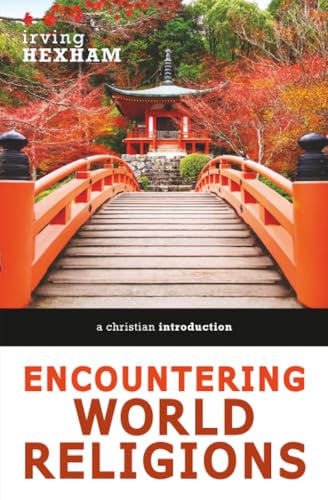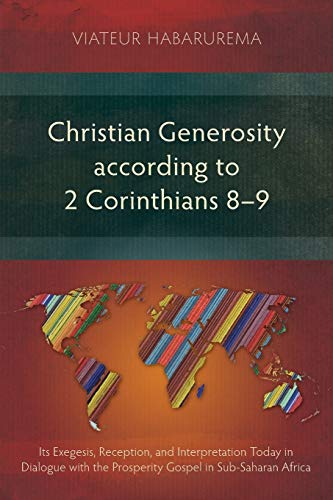Orientation to the History of Roman Judaea
Written by Steve Mason Reviewed By Trevor A. ClarkTwo recent works related to New Testament history will help students and scholars of the New Testament to clarify their task and to understand its significance. Steve Mason’s Orientation to the History of Roman Judaea grew out of a larger project, A History of the Jewish War, A.D. 66 to 74 (Cambridge: CUP, 2016). That book was too large to include Mason’s notes of (self-)criticism aimed at clarifying the historian’s task, so Orientation repurposes that material, restructuring it around two questions: “What does it mean to do the history of Roman Judaea? And how can we orient ourselves to ancient ways of mapping peoples and places?” (p. x). This pair of questions corresponds to the book’s two parts. This work is intended to help students by taking up “matters that I sometimes wish had been raised more explicitly during my academic formation” (p. ix).
In chapter 1, Mason looks to Herodotus and Thucydides for an understanding of history as critical inquiry, not to be confused with tradition, religion, or education—it is to these latter categories that people refer when appealing to “the lessons of history” (pp. 12–18; cf. 36). Nor should history be equated with the events and facts that make up the past; rather, history is the disciplined attempt to answer our questions about the past using the evidence that has survived into the present. According to Mason, “Indeed, the most important—the only indispensable—part of history is the framing and pursuit of questions” (p. 275).
Scholars ask different questions of the past, using different methodologies for arriving at their answers. Such disagreements comprise chapter 2, in which Mason delineates social-scientific and humanist approaches to history. Whereas the former treats “society” as an entity, looking for and applying causal laws and tending toward determinism, the latter focuses on individuals and on unique and unrepeatable events, and places value on human agency and free will. Both approaches are necessary (p. 276) and properly historical (that is, “open-ended and problem-driven,” p. 14), but the author’s approach throughout the book is solidly humanistic, emphasizing “the thoughts behind the actions we are investigating” (p. 81).
Mason’s approach is shaped in part by factors unique to the study of ancient Judaea, factors which he considers in chapter 3. He notes five peculiarities: “(1) the unique prestige of archaeology; (2) the extraordinary importance placed on one literary source—Josephus; (3) certain conceptual and terminological idiosyncrasies, deriving partly from the influence of biblical studies; (4) a marked tendency to form polemical camps; (5) the field’s uniquely broad constituency at both professional and popular levels” (p. 58).
Chapter 4 returns to “the centrality of the question” (p. 74). Because historical inquiry necessarily begins with ignorance, it is no great travesty if it also ends in ignorance. Mason eschews a sense of obligation and entitlement that leads historians to believe something without adequate evidence. In a footnote he asks, “Why must we make a choice and not admit that we do not know?” (p. 74 n. 26). Those answers which the historian does give are rooted in probability and not certainty, and “dissertation-writers in particular should be wary of building a case that depends on a number of merely possible interpretations of evidence (p. 77). Because our evidence provides an inadequate foundation for frequentist or Bayesian probabilities, historians must operate within comprehensive comparative frameworks if their assertions of probability are to carry meaning.
Although historians are justified in asking whatever question they choose about the ancient world, they must interpret the evidence with an awareness that the ancients would not have asked the same questions or held to the same interpretive categories (pp. 61, 77). Thus, in part 2, Mason attempts to recover “the Classical paradigm” (chs. 5a and 5b), describes why that paradigm has shifted (ch. 6), and gives map-making as an example of the differences between ancient and modern ways of viewing the world and its peoples (ch. 8).
Within chapters 5a and 5b, Mason analyzes four categories of belonging or identity that dominated ancients’ descriptions of themselves and others: “[1] ethnos-belonging and all that goes with it (place, customs, laws, way of life, cult), [2] polis-belonging and its correlatives (territory, calendar, festivals, constitution, citizenship, leadership, cult), [3] bloody sacrificial cult (with temples, altars, priests, attendants, rituals, sacred and profane, polluted and consecrated), whether given by the ethnos and polis or voluntarily chosen, and [4] voluntary associations in the poleis, including philosophical schools” (p. 277). Grasping these categories will help students to understand the function of ancient colonies, the balance of friction and coexistence of ancient peoples and their customs, and the focus of particular conflicts within and between cities. If students could approach ancient texts with these categories in mind, they may better discern the motivations of their objects of study. Here, Mason also raises the unavoidable necessity of learning ancient languages, especially becoming familiar with the shared discourse embodied in the LXX.
Chapter 6 deals with “The end of the Classical paradigm,” assigning its demise to the ascendancy of Christianity in the fourth century A.D. Within the Classical paradigm, Christians were anomalous, a multi-ethnic people without any city. Furthermore, with respect to Jews/Judeans, the Christians would gain an advantage if “Judaism” could be turned into a religion and compared (unfavorably) with Christianity. In support of Mason’s thesis, we might draw attention to the New Testament’s vision of a heavenly city in Galatians, Hebrews, and Revelation—perhaps attempts to give the early Christians a city of their own. On the other hand, we might suggest that the Classical paradigm continued in some form beyond the third and fourth centuries—the rise of the papacy in Rome seems to indicate continuing regard for polis.
The final chapter is a striking revelation of the differences between ancient and modern understandings of the world, using the concept of geography and the practice of map-making. Mason discusses the paucity of ancient maps and relates how the ancients conceived of distances and boundaries for the purposes of science, general interest, travel, and war. When investigations of Roman Judaea are bound by modern maps, they may impose a foreign paradigm (governed by ideas of nations and politics) on ancient texts; such studies may miss the texture of interwoven and competing values and allegiances which were part of the Classical world and which shaped human motivations.
Mason’s work succeeds in bringing both clarity and charity to the discussion of history: clarity, because of the attention given to the framing of questions and the evaluation of answers based on correctly interpreting the evidence; and charity, for as scholars come to understand the different questions asked by their peers, who inhabit different disciplines and adhere to different convictions, they might better appreciate both those questions and the people who ask them.
N. T. Wright makes use of Mason’s work in his own History and Eschatology: Jesus and the Promise of Natural Theology, a volume based on his 2018 Gifford Lectures. Wright does not give simple answers to the questions of natural theology, “whether the action of God in the world or the inference of God from the world” (p. 63, emphasis original); rather, he challenges the worldview in which those questions have obtained their meaning, and he proposes a new form of knowledge, an epistemology of love. Central to Wright’s task is the historical study of biblical theology and Jesus himself.
Wright begins by documenting the revival and rise of Epicureanism in the West in the 18th and 19th centuries (chapter 1). The defining feature of this worldview is the split between “natural” and “supernatural.” Critics conceived of a world without God—of politics, economics, science, history, and “progress.” Ironically, the task of natural theology, though designed to meet these challenges, was itself shaped by cosmological and ontological dualism, expressed in the distinction between “special” and “general” revelation. Jesus was excluded from natural theology as belonging to the former, and theologians began to speak of God apart from the world—a “perfect being” to complement Christian retrievals of Plato.
Wright next shows the effects of Epicureanism on the quest for the historical Jesus (chapter 2). Scholars were bound to misunderstand Jesus, not least the eschatological character of his ministry: “As one would expect within an Epicureanism which assumed the radical incompatibility of heaven and earth, for heaven’s kingdom to arrive the earth would have to disappear” (p. 52). From the perspective of natural theology, Jesus could be set aside as simply mistaken. For others, including Bultmann, natural theology would be set aside and Jesus’s words appropriated with an existential, gnostic twist. As such, the intellectual climate that shaped both natural theology and historical Jesus studies served to keep these two disciplines from dialogue.
In chapter 3, Wright posits “history” (as events, narration, task, and meaning) as a way toward rapprochement, although first history itself must be rescued from the Epicurean dualism expressed in Lessing’s “broad, ugly ditch” and perpetuated through several loaded definitions of “historicism.” Wright redefines the historian’s task as an exercise in “critical realism” (p. 190) necessitating “an epistemology of love” (pp. 77, 95–99). Only love avoids the risk of “making the past in one’s own image” (p. 103). Thus, history offers hope for those engaged in natural theology (since history, including the study of Jesus in history, involves the study of the real world), and it also exposes the main fault of Epicureanism—its antipathy toward love (pp. 37–39).
With these historical aims, Wright moves in chapter 4 to examine the apocalypticism and eschatology of Jesus and the early Christians. “Eschatology” refers not to the imminent end of the world, nor to an inexorable progression of events, or an invasion from above, or an internal/existential experience, or to something already fully realized, but rather to the “quite widespread Jewish view of ‘two ages’” (p. 131) and to the belief that through Jesus’s death and resurrection “‘the age to come’ has already been inaugurated” (p. 132, emphasis original). Similarly, “apocalyptic,” in line with the genre of texts that bears that name, does not denote God’s bringing creation to an end, but rather his work within the world to upset socio-political realities in a manner infused with cosmic and covenantal significance. Wright’s rigorous discussion of texts (e.g., Mark 9:1; 13:30, Rom 1:3–4; 8:18–25; 1 Cor 15) convincingly demonstrates that the concept of an inaugurated kingdom is not a “modern apologetic invention” (p. 139), but was the conviction of the earliest Christians, expressed in the language of the Psalms and the Prophets.
Wright begins his positive contribution to the questions of natural theology in chapter 5, through a recovery of the Jewish worldview as an alternative to the Epicurean. The discussion concentrates on three topics—temple, Sabbath, and the divine image. The temple represents a Jewish cosmology in which heaven and earth are in fact “overlapped and interlocked” (p. 166). Similarly, the Sabbath unites past, present, and future—“the Age to Come inserting itself into the rhythms and sequences of present time” (p. 166). Alongside temple-cosmology and Sabbath-eschatology stands the royal anthropology of image-bearing, the vocation “in which humans, particularly the king, reflect God into the world” (p. 178). Within this framework, Jesus’s controversies within the Gospel narratives take on a new significance, and so does the task of natural theology: inherent in the human vocation and enabled by the Jewish view of space is “the summons to glimpse the new creation and, on that basis, to discern and respond to the meaning in the old” through a hermeneutic of love (p. 174, emphasis original).
Chapter 6 constitutes Wright’s most thorough explanation of the epistemology of love, grounded in Jesus’s resurrection. Drawing on categories laid out at the end of chapter 3, Wright defeats the defeaters, dismantles the distortions, and directs the discussion regarding the resurrection—“all the signs are that the first disciples really did believe that Jesus was bodily alive again … and that easily the best explanation for this is that they were right” (p. 197). Yet, the goal of this chapter is not to prove that the resurrection occurred, but rather to explore the new mode of knowing that the resurrection necessitates—love. Playing on Wittgenstein’s “it is love that believes the resurrection,” Wright argues the statement is true for the historian who recognizes within the resurrection God’s own love for and affirmation of the world, and who must answer that love in turn. Far from subjectivism or positivism, this epistemology involves the whole person and indeed whole communities. Perhaps the reason why the resurrection seems incredulous to us modern Westerners is that our culture has “screened out ‘love’ itself” (p. 211, emphasis original).
How might an epistemology of love attempt to glean wisdom about God from the world around us? In chapter 7, Wright addresses the riddle of natural theology directly. The alternative worldview of Jewish cosmology, eschatology, and anthropology bears some analogy to the traditional arguments of natural theology—the cosmological, teleological, and moral arguments. For Wright, the latter is the most promising, though the traditional questions, shaped by the Epicurean framework, have reduced the human vocation to ethics. A more complete understanding of human image-bearing reveals seven “vocational signposts” promising knowledge of God: justice, beauty, freedom, truth, power, spirituality, and relationships (pp. 224–34). But these are broken signposts, marked by disappointment, weakness, and failure—“all of them together will not lead the unaided mind to the God who is the Father of the crucified and risen Jesus” (p. 224). However, in their very brokenness they point toward the cross of Christ, the ultimate broken signpost. There we discover, again, the epistemology of love which infuses the other signposts with renewed meaning.
Chapter 8 is both the climactic summary of Wright’s book and a summons to a new form of natural theology. Because true knowledge of God can only be had through the epistemology of love, the task of natural theology must be reshaped to include the mission of the whole church and all its members, celebrating and anticipating the fullness of God “in self-authenticating fashion” (p. 277). Natural theologians are in the position of those who, having discovered an ancient chalice, are drawn to understand its significance. The world, like the chalice, promises both beauty and meaning; but just as the meaning of the chalice can only be fully grasped through participation in the Eucharist, so the significance of the world’s broken signposts can only be glimpsed from the perspective of the new creation. It is the church’s task to convey the knowledge of God in the present world: through mission (healing and justice), art, science, politics, and the sacraments themselves.
Although this review is primarily interested in History and Eschatology’s vision of the historical task, many readers will be interested the book’s philosophical and theological dimensions, particular the question of whether or not Wright affirms the task of natural theology. Probably the author would dismiss this question as hasty, pragmatic and reductionistic. In his discussion of Jewish vs. Epicurean cosmologies, Wright argues that the discourse of natural theology has been directed through false presuppositions, to be corrected through history: it is somewhat beside the point to ask if humans can “think up” to God if in fact we do not live in a “split-level” universe after all. Furthermore, Wright’s insertion of eschatology into the conversation reveals that the knowledge of God has an eschatological character: the task of natural theology can be affirmed within the inaugurated kingdom; but simultaneously, attempts to derive proofs for God or an exhaustive theology of God from nature constitute a sort of over-realized eschatology (p. 258). Finally, Wright’s discussion of the cross deserves further comment.
Speaking of the cross and natural theology, Wright draws on John’s Gospel—“when the human ‘quest for God’ reaches a dead end it may then discover God as the one who has himself died” (p. 276, emphasis original). Here, Wright’s logic is analogous to Dietrich Bonhoeffer’s reflections on “costly grace,” in which the essence of “justification by faith” is rightly preserved only as the answer to a sum, not as data, as a conclusion, not a presupposition (Dietrich Bonhoeffer, Discipleship, trans. Martine Kuske and Ilse Tödt [Minneapolis: Fortress, 2003], 9–11). Bonhoeffer draws from Goethe’s Faust, “At the end of a life spent in the pursuit of knowledge Faust has to confess: ‘I now do see that we can nothing know’” (Discipleship, 11). (Interestingly, both Wright and Bultmann [with whom Wright is in implicit dialogue throughout] also quote from Goethe’s version of the German legend.) This same manner of reasoning characterizes Wright’s argument, mutatis mutandis. The world’s testimony about God, when followed to the end, reveals itself to be broken. But that brokenness, in light of the cross, the resurrection, and new creation, also reveals the manner in which God might be known and loved.
In comparing Steve Mason’s work with that of N. T. Wright, we notice a number of correspondences—both authors maintain that the past must be understood on its own terms, and that modern categories such as “religion” and “politics” are not only anachronistic but unhelpfully reductionistic. Both focus on the internal motivations of ancient personages (Mason, p. 81; Wright, pp. 96–98). Finally, both trace the departure of the modern worldview from the ancient one, with Mason looking to the polemics of early Christendom and Wright to the rise of Epicureanism during the Enlightenment. Whereas Mason treats “the Classical paradigm” as an ancient phenomenon inclusive of Greco-Roman and Jewish traditions, Wright emphasizes the unique elements of a Jewish worldview.
For a more significant contrast of Mason and Wright, we might say that the former focuses on the questions that comprise the historical task, and the latter is more interested in the answers that history might provide. Now, Mason is not an inveterate postmodern (p. 66) any more than Wright is a recalcitrant positivist—neither label fits either scholar. Mason’s focus on the question is necessary: it clarifies the historical task and engenders humility, enabling the scholar to remain “successful” whilst affirming that they “do not know” the answer to a given question—sometimes it is simply enough to ask and investigate. Highlighting the question should produce charity among and between different scholars, when they stop and listen to what their colleagues are actually investigating, and along what lines. Mason’s work has in part an apologetic purpose, examining his motives and explaining his own interpretive decisions (most notably concerning the debate over the translation of Ἰουδαῖος). As such, Mason’s work exhibits a desire that points ahead to Wright’s work, the need to be understood. The epistemology of love, which according to Wright defines not only the historical task but all reality, holds out the promise not only of knowing, but also of being known.
Trevor A. Clark
Trevor Anthony Clark
Gateway Seminary
Ontario, California, USA
Other Articles in this Issue
This article is a brief response to Bill Mounce’s recent Themelios essay in which he argues that functional equivalence translations such as the NIV are the most effective approach to Bible translation as they carry over the meaning of the original text...
In 1 Timothy 2:15, Paul asserts “the woman will be saved through the childbirth...
This article argues that Paul compares the day of the Lord to a thief in the night in 1 Thessalonians 5:2 because of the influence of Joel 2:9...
The Jerusalem Donation was the Apostle Paul’s largest charity drive...



